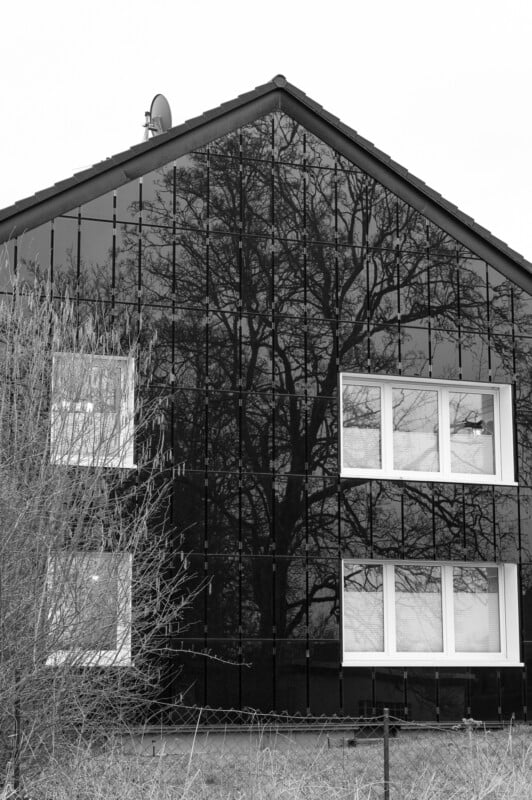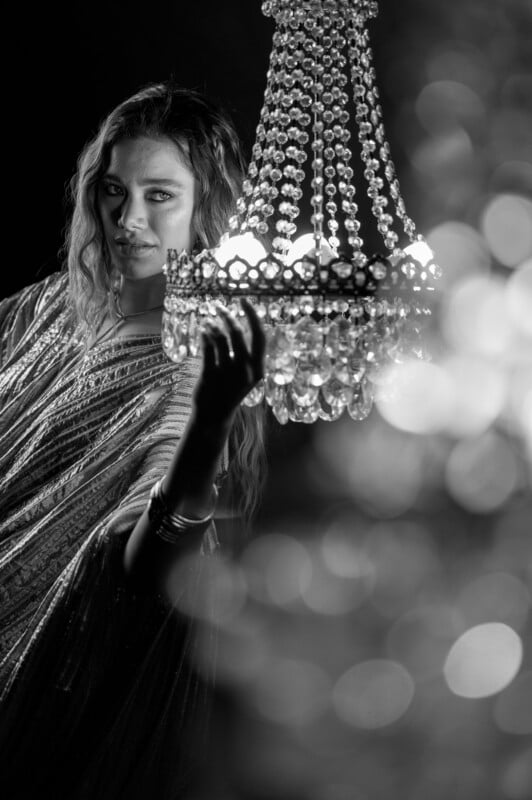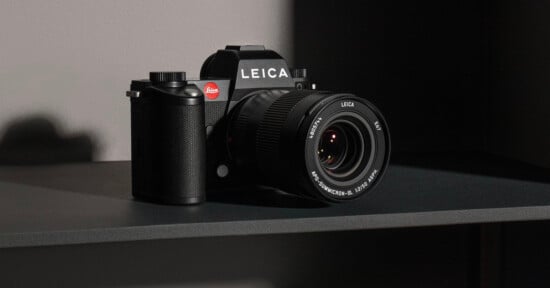Leica SL3 Initial Review: L-Mount’s Best High-Res Option… For Now
The Leica SL3 is the latest entry in the high-megapixel camera arena and the first for L-mount in some time. I was excited to get it in my hands, even if it was still in the pre-production phase. Crippling jet lag aside, I was awake enough to truly appreciate the new body design and changes to the interface of this premium camera.
Leica SL3 Initial Review: How it Handles
At first glance, the SL3 looks very similar to the SL cameras that have come before it. Upon closer inspection, however, the menu buttons have been moved over to the right side of the screen very much like we see on the Q3. There is also a glaringly obvious change with a power button now mounted instead of a power switch. This button looks more at home on a computer rather than a premium camera and it did take some getting used to. It is LED backlit with different colors to show different modes of use and can be customized for brightness and function.


If you really pay attention you may also notice that the body is ever so slightly smaller, shaving a few millimeters off the width and height of the camera. The weight has also been reduced from 835 grams down to 762 grams. In practical terms, the size and weight reductions are minor at best but Leica was very adamant about making these changes, so much so that they designed a new shutter and IBIS (in-body image stabilization) unit to fit.

Surprisingly, this comes with a hardware downgrade resulting in the maximum flash sync speed being reduced to 1/200 second, and the IBIS rating down to five stops of stabilization from five and a half. These aren’t big reductions but it’s still odd to see a newer camera losing capability compared to its predecessors.
What I absolutely love about the new design is how easily it allows for the operation of the camera. Leica has always endeavored to make simple-to-use cameras but the SL3 is the most intuitive yet: you can press and hold pretty much any button to reprogram it however you like.
Leica has introduced all new iconography for its customizable menu options and the results are much easier to identify. The quick menu has been revamped and I appreciated the ability to simply long-press icons right on the LCD panel to change common settings as well. All of these changes mean that menu diving is almost completely unnecessary and the SL3 is easy enough for anyone to quickly understand.


The changes aren’t just interface-related either. We have the same 5.76 million dot EVF but the new 2.36-million dot back panel now articulates vertically. This is wonderful for low-angle shots and is a much-needed addition. The EVF provides good eye relief and the back panel extends far enough out that the eye cup doesn’t block your view. The battery supply is now the longer-lasting BP-SCSL6 battery from the Q3.
However, I still consider this a weakness of the Leica system as the overall battery life is still relatively poor. The CIPA rating on a full charge is only 250 shots. In practical situations, you will get more but compared to other modern full-frame cameras, this is a poor result, and I could not get through a full day of shooting without a spare. You can also use the older BP-SCSL4 battery but it lasts even less time and you lose faster burst rates and 4K/8K recording capabilities altogether.


We do get a big change to the file storage in the SL3 with a CFexpress type B slot now present to go with a UHS-II SD slot. This makes sense given the larger 60-megapixel files out of the new sensor, but the SL3 still only shoots up to five pictures per second with autofocus enabled.
Lastly, your expensive investment is protected with a beautiful and rugged body rated for IP54 weather resistance. As much as someone may baby their Leica, these cameras can take rough weather and abuse when needed.


Leica SL3 Initial Review: How it Shoots
The big headline change will be the addition of hybrid phase detect autofocus (AF). Ever since Panasonic added this to the S5II we expected the SL series to follow close behind. The tracking works better on the SL3 and the focus is an improvement over the SL2.
The new subject detection modes for humans and animals are being refined and I found the accuracy excellent for portraits of models in the studio and on the street. However, I still found some issues with continuous autofocus reducing the resolution of the EVF while focusing. This is quite distracting and seems to be here to stay.
There is also a tendency for the continuous autofocus to pulse, much like you’d find on a contrast-only autofocus system. This all contributes to a somewhat poor experience when shooting in faster sports and action scenarios and I was disappointed to largely stick with a noncontinuous autofocusing mode for much of my time with the camera.


Image quality is excellent, which is to be expected. We’ve seen similar results out of the Leica Q3 cameras, and the results show plenty of detail from the 60-megapixel sensor with rich tonality and good high-iso performance.
Leica always makes top-quality lenses that mate perfectly with the 60-megapixel sensor and I find the color palette to be distinctly “Leica” in a very good way. Curiously, Leica hasn’t implemented a multi-shot mode in the SL3 although it was heavily implied by the engineers that this can be added in the future. Because the SL3 is still in pre-production, this makes sense and I hope some of the issues we are seeing will be rectified shortly.


Overall, the Leica SL3 is very easy to use with a prestigious-looking body, brilliant image quality, and some thoughtful changes to the back panel and button placements. The SL3 is a very stable platform to shoot with and focuses accurately in still-life situations. I just wish that the continuous autofocus experience was better and that the camera could sustain faster burst rates while autofocusing.
As it is, the SL3 is far more suited for studio or landscape applications and although I would happily take it into the journalistic field, I would need something else for faster action situations entirely. Unfortunately, it is the SL3 that should be the most capable camera in the Leica family when it comes to sport and action.
Leica SL3 Initial Review: New Video Capabilities
The SL3 comes right out of the gate with some purposeful video tools like shutter angle settings instead of shutter speed and waveforms. It also supports 4K 60p and 8K record modes.
However, the fact of the matter is that a 60-megapixel sensor is just not ideal for video work. To shoot 4K and 8K video a heavy 1.3x crop factor is applied and rolling shutter is rampant due to a relatively slow-scanning sensor. Full HD 1080p is the only record mode where the whole width of the sensor is being used and it is also the only mode where ProRes recording is enabled.
The Leica SL3 only allows h.265 compression when recording 8K which totally makes sense but there are annoying issues when trying to switch between record modes, bit rates, and compression codecs.

For example, if you are in 4K 10-bit the SL3 should gray out unsupported codecs, but instead allows you to choose h.265 which lets you think it’s an option. However, doing so automatically kicks the camera into 8K mode, losing all the work you did setting up 4K. Or perhaps you’ll want to drop the data rate and happen to choose one that is only supported in a 1080p record mode. Now you will find yourself in 1080p and have to start from scratch resetting everything.
It seems you have to memorize exactly all the permutations that are available to know which ones not to choose, whereas most other camera companies would simply gray out options and explain why you can’t choose them.

The SL3 is not set up to be an ideal video camera and thus does not work as an ideal hybrid either. The poor battery life also has an impact in video mode with a roughly 40-minute life span. All of this largely commits the SL3 as a photo-centric platform.
Leica SL3 Initial Review: The Best (Read: Only) Choice for High-Resolution on L-Mount
In L-mount, the only other option for a 60-megapixel full-frame mirrorless camera is the Sigma FP-L which is infinitely less enjoyable to use and has plenty of its own issues. The Sony a7RV does provide similar image quality in a much more well-rounded and versatile camera system, but that would require a switch to E-mount.
We do expect Panasonic to revisit its S1 series soon, but for now, the best option for high-resolution photography on L-mount appears to be the SL3.


